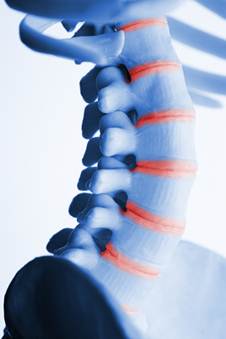
Wear and tear of the spine affects the discs, bones, joints and ligaments of the spine. If it arose anywhere else in the body, it would be called arthritis though medics tend to call it spondylosis so as to create an air of mystique amongst the patients and to leave the students in a state of awe. However, even though it is more common amongst those who do heavy manual work or play heavy spinal sports such as rugby, there are many sedentary sufferers. There are familial patterns of inheritance, the random genetic lottery of our make-up and specific injuries adding to the mix, as well as yet unidentified biological processes. This degenerative process arises earlier in the spine than in any other joints of the body and is frequently seen on MRI scans in the late teens.
As degeneration sets in, swellings on the bone adjacent to the discs develop and give rise to narrowing of the spinal canal or intervertebral foramen and this in turn puts pressure on the nerve roots. The bony swellings are called osteophytes and they may arise not only adjacent to the disc, but also on the small hinge joints at the back of the spine – the facet joints. As the degeneration proceeds, the disc also loses height as it wears and the gap between the vertebrae is reduced. As a result, the intervertebral foramen, the canal from which the nerve root normally exits from the spine, narrows. This again, can give rise to nerve root symptoms such as sciatica or brachalgia.
The removal of the osteophytes and the widening of the nerve’s exit hole (intervertebral foramen) can be widened with surgery by nerve root decompression.
Ligaments in the spinal canal can calcify and thicken and this process may narrow the central spinal canal and give rise to spinal canal stenosis also. Here, the symptoms are classically felt when walking or standing upright and are relieved by sitting or bending forwards in which position the spine is relatively open – patients may be able to ride a bicycle for miles but walk only for a few tens of yards. If the central part of the spinal canal has been narrowed and all the nerves are compressed, the central canal can be opened up via surgical widening called central canal decompression. It is important to note that it is entirely possible to have both a prolapsed disc and a narrowing in the lumbar spinal canal. When this happens in the neck, the cervical spine, narrowing of the spinal canal can give rise to myelopathy and you may need a vertebrectomy operation to relieve the symptoms.